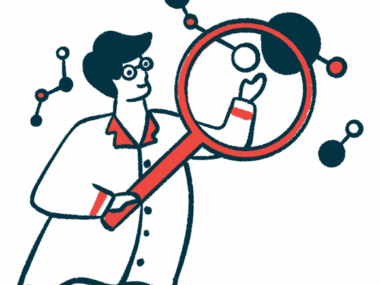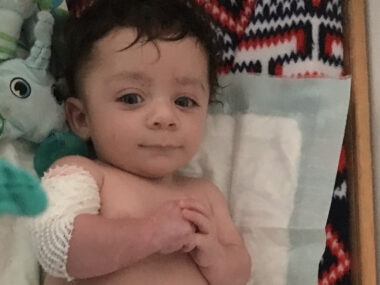EB patients report high psychosocial health burden in interviews
Findings highlight importance of personalized support for those living with EB
Written by |

In interviews, people with epidermolysis bullosa (EB) reported that living with these rare skin diseases has broad impacts on their psychosocial health.
This burden was seen across physical, emotional, social, and functional domains, per the study, conducted in Europe.
According to the researchers, the findings emphasize the importance of understanding how each individual is impacted by the condition — given that symptoms and their severity can vary widely among patients — and offering personalized support to make living with EB easier.
“It is essential for [people with EB] to be taken seriously and to be seen and treated as human beings and not just as ‘sufferers’ and ‘patients,’” the researchers wrote. “It helps to consider [people with EB] and their relatives as experts for their own case, and to pool individual and medical expertise for finding the best solution for the individual concerned.”
The study, “The physical, emotional, social, and functional dimensions of epidermolysis bullosa. An interview study on burdens and helpful aspects from a patients’ perspective,” was published in the Orphanet Journal of Rare Diseases.
Investigating how EB affects psychosocial health
EB refers to a group of conditions characterized by fragile skin that easily blisters and tears. It’s caused by genetic mutations that affect the production of proteins important for giving skin structure and support.
Daily life can be substantially impacted for EB patients, studies have found, leading to declines in quality of life and well-being.
In this study, scientists in Austria aimed to learn more about how EB impacts psychosocial health. The team conducted semi-structured interviews with 17 EB patients from Austria, Germany, and Italy.
These individuals ranged in age from 10 to 49, with an average age of 26. While they had varying EB types overall, slightly more than half (52.9%) were living with dystrophic EB. Nearly one-quarter of patients (23.5%) had EB simplex, the disease’s most common form, with an equal percentage diagnosed with junctional EB, marked by blistering over large areas of the body.
The interviews revealed substantial physical impacts of EB, due to severe itching and pain, the burden and discomfort of wound care, nutritional difficulties, and restricted motor skills or mobility. An inability to participate in sports was often mentioned as a limitation difficult for patients to accept.
Helpful factors for managing physical impacts included mobility to restore more independence, as well as having medical experts with knowledge about EB helping patients manage their disease. The interviewees reported a desire for doctors to be honest about the diagnosis, the prognosis, and what to be prepared for in living with EB.
“For me, a successful treatment is certainly one that manages to make daily life a little easier, to relieve the pain and perhaps to get information about innovations in research, about new applications that exist,” one patient said in an interview.
The greatest emotional limitation for patients was the struggle to feel like one is living a normal life. Being unable to do things others easily do resulted in feelings of frustration for many, as did the high degree of dependence many patients have on others. Some patients reported feeling like there is never a break from EB.
Feelings of uncertainty and insecurity related to the highly individual and variable nature of EB were also reported by patients, who noted that the disease can be unpredictable in how it will manifest on any given day.
“What’s difficult is that it’s unpredictable,” one patient said. “You can do well today, then something happens to you and you can’t walk for a week, for example.”
Researchers say ‘next step’ is larger, multinational study
Things that patients found helpful for better psychosocial health included accepting the situation and finding alternative solutions to enable them to live as close to “normal” as possible.
Because EB is a visible disease, patients reported having to deal with reactions from others, including discomfort, disgust, or constant questioning. This often impacted the patients’ own social health. In the healthcare setting, dealing with doctors not trained to treat EB also caused stress.
Interviewees noted that finding supportive environments was helpful, as was working to help others better understand EB so that they could be more open about it.
Strict daily medical schedules were noted as sometimes being constraining for other life activities, and limiting patients’ ability to be spontaneous, according to the interviews. EB care, the patients noted, is also expensive, and application processes for financial assistance can be time-consuming and difficult.
Financial support and regular help around the house were noted as helpful aspects for dealing with these functional impacts of EB.
What works for one person does not necessarily work for another, hence individual solutions need to be found, again and again.
Overall, the findings highlight that EB patients experience substantial daily life impacts across psychosocial domains, namely physical, emotional, social, and functional aspects. The researchers emphasized that every person with EB is different, and patients will need different sources of support to help them have the best possible quality of life.
“What works for one person does not necessarily work for another, hence individual solutions need to be found, again and again,” the researchers wrote.
One of the limitations of the study, as noted by the team, was its inclusion of patients from a relatively limited geographic area. Other countries worldwide may have very different healthcare systems, the researchers noted.
“A next step would be to investigate the identified topics on a quantitative level with a larger EB population, ideally on a multinational level,” the team concluded.
The work was supported by DEBRA Austria, a nonprofit patient organization based in Vienna.







